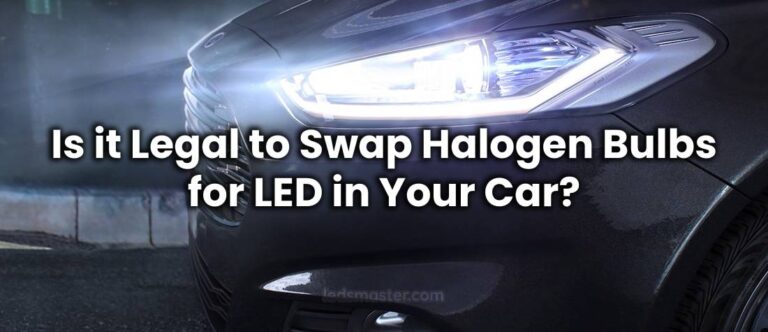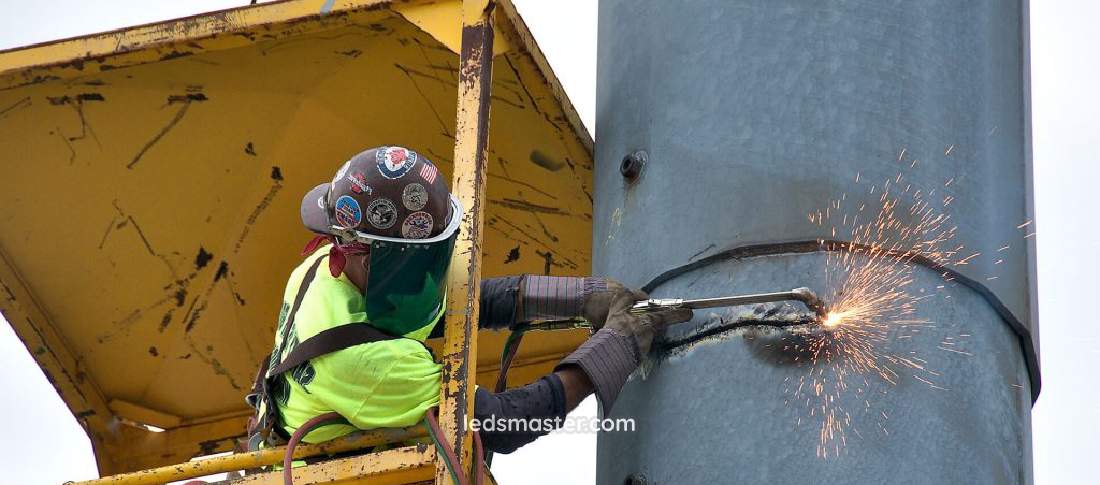
Lighting replacement isn’t just about updating your fixtures—it’s about stepping into a new era of brilliance and efficiency. With LED technology leading the way, you can enjoy vibrant illumination, lower energy bills, and a greener footprint. Discover how replacing your old lighting can transform your space and your savings.
Get your complimentary lighting design today
As technology advances, the shift towards LED lighting has become a defining trend. This transition is not only a significant upgrade in terms of energy efficiency and longevity but also a step towards a greener future. This article explores the benefits of LED lighting, the power equivalents compared to traditional lighting sources, and other considerations involved in lighting replacement.
Table of Contents
ToggleLED lighting has revolutionized the lighting industry with its advanced technology and numerous advantages over traditional lighting solutions. Unlike incandescent and fluorescent lights, LEDs use a semiconductor to convert electricity into light. This fundamental difference leads to several key benefits that make LED lighting the preferred choice for both residential and commercial applications.
One of the advantages of LED lights is their energy efficiency. LEDs consume significantly less power compared to incandescent and fluorescent bulbs. For instance, an LED bulb that consumes just 10 watts of power can provide the same amount of light as a 60-watt incandescent bulb. This energy efficiency translates into substantial savings on electricity bills and a reduced environmental impact due to lower energy consumption.

One of the arguments for the growing prevalence of LED lighting is its remarkable lifespan. LED bulbs can last up to 25,000 hours or even longer, which vastly outpaces incandescent bulbs, typically burning out after about 1,000 hours, and fluorescent bulbs, which usually last around 10,000 hours. This extended lifespan means that the frequency of replacements is significantly diminished, which in turn leads to lower maintenance costs and less waste generated from discarded bulbs.
The durability of LED lights further enhances their appeal. Unlike traditional lighting options, which are often constructed from fragile materials, LEDs are designed with solid-state components. This construction not only contributes to their longevity but also renders them resistant to shock and vibration. Such resilience is especially beneficial in environments where lighting may be subjected to rough handling, such as in industrial settings, outdoor locations, or even in homes with children and pets. In these circumstances, LEDs provide a robust solution capable of enduring harsher conditions without the risk of breakage that often accompanies conventional bulbs. This durability not only reduces the need for frequent replacements but also contributes to the overall cost-effectiveness of LED lighting in both residential and commercial settings.
The lifespan of LED lighting is not merely a result of superior materials; it is also a product of advanced engineering. LEDs operate at lower temperatures than incandescent and fluorescent lights, which tend to generate excess heat. This excess heat can damage components and reduce the overall lifespan of traditional bulbs. In contrast, LED technology has been designed to efficiently convert electricity into light while minimizing wasted energy as heat. This thermal efficiency not only prolongs the life of the bulbs but also enhances their performance.
Moreover, the performance of LEDs remains consistent over time. Unlike traditional bulbs that experience a gradual decrease in brightness as they age, LED lights maintain their luminosity throughout their lifespan, ensuring that the quality of light remains high. This consistent performance is particularly valuable in applications where lighting quality is crucial, such as in retail environments, art galleries, and residential spaces. Users can rely on LED lights to provide the same level of illumination from the moment they are installed until they finally reach the end of their lifespan.
The longevity of LED bulbs also translates into reduced maintenance efforts. In commercial settings, where lighting needs to be regularly maintained and replaced, the long lifespan of LEDs means fewer service calls, less labor, and ultimately lower operational costs. Facilities managers can benefit from the extended intervals between bulb replacements, allowing them to focus on other critical tasks instead of routinely addressing lighting issues.
In residential settings, homeowners appreciate the convenience of not having to replace bulbs frequently. The hassle of climbing ladders or navigating tight spaces to change light fixtures becomes a less frequent burden, which is particularly advantageous for those living in multi-story homes or larger properties. Over time, the cumulative savings in both money and time associated with LED lighting make it an appealing choice for anyone looking to enhance their living or working environment.
The environmental advantages of LED lighting extend beyond energy efficiency and durability. One of the most compelling aspects of LEDs is that they do not contain harmful substances such as mercury, which is commonly found in fluorescent bulbs. The absence of such toxic chemicals makes LEDs safer to handle and dispose of, significantly lowering the risk of environmental contamination. This characteristic aligns with the growing consumer awareness and demand for products that are not only effective but also environmentally responsible.
In addition to being free of harmful substances, LEDs contribute to a reduction in greenhouse gas emissions. Since they consume less power than traditional lighting options, LEDs help decrease the demand placed on power plants. This reduction in demand not only conserves energy resources but also helps lower carbon dioxide emissions associated with electricity generation. As governments and organizations across the globe prioritize sustainability, switching to LED lighting harmonizes with broader ecological initiatives aimed at combating climate change.
The energy efficiency of LEDs is a factor in their environmental impact. When compared to incandescent bulbs, which convert only about 10% of energy into visible light, LEDs achieve efficiency rates of 80% or more. This means that a larger proportion of the energy consumed by LEDs is used to produce light rather than wasted as heat. By using less energy to achieve the same illumination levels, LEDs play a pivotal role in reducing overall energy consumption in homes and businesses alike.
Furthermore, the extended lifespan of LED bulbs contributes to waste reduction. Traditional incandescent and fluorescent bulbs have relatively short lifespans, resulting in a significant amount of waste over time. In contrast, the long life of LEDs means fewer bulbs are discarded, leading to less waste in landfills. As the global population grows and urban areas expand, the need for sustainable waste management becomes increasingly urgent. By adopting LED lighting, individuals and businesses can contribute to reducing the amount of waste generated and promote a more sustainable future.
While it is common for LED lights to come with a higher initial price compared to traditional lighting options, the long-term savings they offer are substantial. The higher upfront investment quickly pays off through decreased energy bills and reduced replacement expenses. Over time, the total cost of ownership for LED lighting becomes significantly lower than that associated with incandescent or fluorescent lighting systems.
Many consumers and businesses hesitate to invest in LED technology due to its higher initial costs. However, it is essential to consider the return on investment (ROI) that comes with these bulbs. The substantial reduction in energy bills—often up to 75% compared to traditional lighting—can lead to significant savings over time. Additionally, as LEDs require less maintenance and fewer replacements, the cumulative costs associated with ongoing purchases and labor decrease.
These institutions often operate on tight budgets and seek ways to reduce expenses without compromising on quality. The transition to LED lighting not only addresses the need for cost reduction but also supports the goal of creating healthier, more efficient environments for staff, students, and patients.
In many regions, governments and utility companies offer incentives and rebates for businesses and homeowners who upgrade to LED lighting. These financial incentives can significantly offset the initial investment and enhance the return on investment. By taking advantage of these programs, organizations can accelerate the financial benefits of transitioning to LED technology, making it even more attractive.
For businesses, particularly, these incentives can be a driving force behind the decision to adopt LED lighting. Companies often evaluate their operational costs and look for ways to improve profitability. The combination of energy savings, maintenance reductions, and available financial incentives creates a compelling case for transitioning to LEDs, leading to enhanced financial performance and operational efficiency.
When evaluating lighting replacement options, it is beneficial to understand the power equivalence among different lighting technologies. LEDs are frequently compared to incandescent and fluorescent bulbs regarding brightness, which is measured in lumens. Lumens indicate the total amount of visible light emitted by a bulb, while watts signify the power consumed by the bulb.
For instance, an LED bulb that consumes just 12 watts can produce a light output equivalent to that of a traditional 75-watt incandescent bulb. This efficiency allows for more precise and adaptable lighting designs. By utilizing LEDs, it is feasible to achieve the desired illumination levels while simultaneously reducing power consumption. This characteristic is particularly advantageous in environments where lighting requirements can fluctuate, such as in adaptable office spaces or multi-purpose rooms.
The ability to use less energy while providing equivalent brightness opens up new possibilities for lighting design. Architects and designers can explore innovative solutions that optimize both aesthetics and functionality without compromising on energy efficiency. By leveraging the power equivalence of LEDs, they can create environments that are not only visually appealing but also environmentally responsible.
Different applications may require different levels of brightness and color temperatures. For instance, in retail spaces, brighter lighting can attract customers and enhance product visibility. In contrast, softer lighting might be more suitable for dining establishments, where a warm ambiance is desired. Understanding these nuances allows for better decision-making when selecting LED options that meet the specific needs of each space.
The flexibility in brightness and energy consumption associated with LEDs empowers users to tailor their lighting solutions to align with their operational or aesthetic goals. Whether in homes, offices, or commercial settings, the adaptability of LED technology provides a unique advantage that enhances overall lighting quality.
Transitioning from traditional lighting to LEDs involves several considerations that should be kept in mind. Initially, ensuring compatibility between LED fixtures or bulbs and existing fixtures or dimming systems is important. Some older fixtures may necessitate modifications or the use of adapters to accommodate LED lighting.
Before making the switch, it is wise to assess the current lighting infrastructure. This assessment includes examining existing fixtures, wiring, and control systems to determine what adjustments may be needed for a seamless transition. Engaging with professionals who understand the technical aspects of LED installations can streamline the process and ensure that the benefits of LED lighting are fully realized.
In addition to compatibility, evaluate the overall design and layout of the space. Different areas may require different types of LED lighting, from recessed lights to pendant fixtures, depending on the intended use. Considering how each space is utilized will guide the selection of appropriate fixtures and ensure optimal performance.
When selecting LED products for replacement, choose options that cater to the specific needs of the intended application. LED lights are available in various color temperatures, ranging from warm white to cool white. Selecting the appropriate color temperature can influence the overall ambiance and functionality of the space. For instance, warm white LEDs are often favored in residential settings to create a cozy atmosphere, while cooler temperatures may be more suitable for workplaces where clarity and focus are prioritized.
The range of available LED products allows for flexibility in achieving desired aesthetics. Different color temperatures and designs can be used to create unique atmospheres in various environments, from modern minimalist homes to traditional settings. By carefully selecting the right LED fixtures, users can enhance their spaces and create environments that meet their specific needs.
The versatility of LED lighting is another reason for its growing popularity. LEDs can be employed in a wide array of applications, ranging from residential to commercial and industrial uses. In homes, LEDs serve as effective ambient lighting, accent lights, and task lighting, providing homeowners with numerous choices to create the desired atmosphere.
In commercial settings, the adaptability of LED lighting can enhance productivity and customer experience. For example, in retail spaces, the use of bright, focused LED lights can help highlight products and attract customers. Proper lighting can make a significant difference in sales and overall customer satisfaction, making it essential for businesses to invest in high-quality lighting solutions.
In office environments, adjustable LED fixtures can accommodate varying lighting needs throughout the day, fostering a conducive working atmosphere. Task lighting can be implemented to assist employees in performing detailed work, while ambient lighting can create a comfortable environment. The ability to adjust brightness and color temperatures further enables businesses to tailor their lighting to the specific needs of their staff, ultimately contributing to improved morale and productivity.
Streetlights, parking lots, and architectural lighting can benefit from the energy efficiency and longevity of LEDs, making them a favorable choice for municipalities and property owners. The ability to design smart lighting solutions that can be adjusted based on real-time needs adds another layer of versatility to LED technology.
For cities, the transition to LED streetlights can result in considerable cost savings in energy and maintenance. LEDs require less frequent replacements, reducing labor costs and enhancing public safety by ensuring consistent illumination on roadways. The combination of lower energy consumption and improved lighting quality makes LEDs an attractive option for municipalities looking to enhance urban lighting while minimizing expenses.
The rapid pace of technological advancements in LED lighting continues to drive its adoption across various sectors. Recent innovations include the development of smart LEDs, which can be controlled remotely through smartphones or integrated into home automation systems. This technology allows users to adjust brightness levels, color temperatures, and lighting schedules, providing even greater control over their lighting environments.
Additionally, advancements in LED technology have led to improved color rendering capabilities. Modern LEDs can produce light that closely mimics natural sunlight, enhancing the visual experience in both residential and commercial spaces. This improvement in color accuracy not only makes environments more appealing but also enhances the functionality of spaces where color differentiation is critical, such as art studios or design workshops.

LED lighting generally requires minimal maintenance due to its long lifespan and durability. However, regular cleaning of fixtures and checking for any issues is still recommended to ensure optimal performance. Dust and debris can affect light output and efficiency, so keeping LED fixtures clean will help maintain their effectiveness.
Performance is another area where LEDs excel. They offer instant illumination with no warm-up time, unlike some fluorescent lights that take time to reach full brightness. Additionally, LEDs are designed to perform well in a wide range of temperatures, making them suitable for both indoor and outdoor applications.
Lighting replacement with LED technology represents a advancement in energy efficiency, cost-effectiveness, and environmental sustainability. The numerous benefits of LED lights, including their long lifespan, durability, and reduced energy consumption, make them a superior choice compared to traditional lighting options. As technology continues to advance, LED lighting will play an increasingly important role in creating brighter, more efficient, and sustainable lighting solutions for the future. Whether for residential, commercial, or industrial applications, embracing LED lighting is a step towards a smarter and greener world.